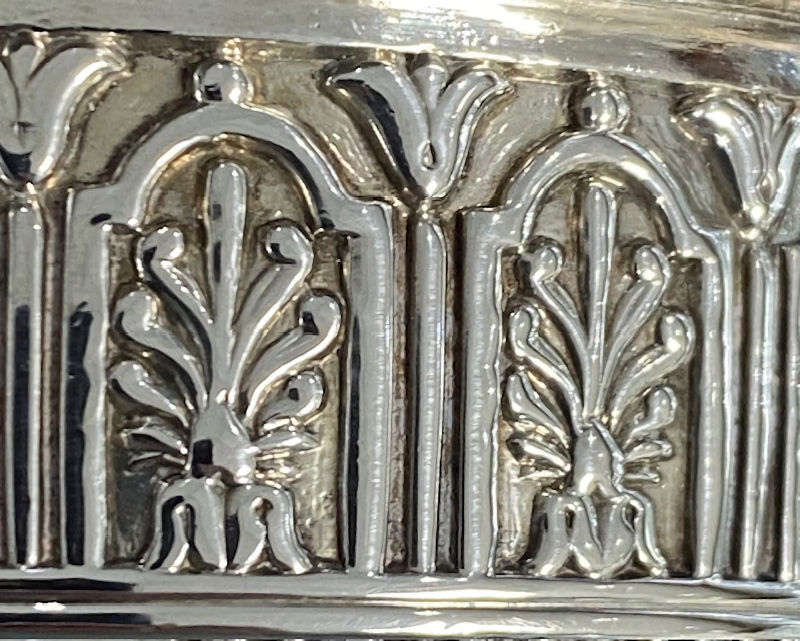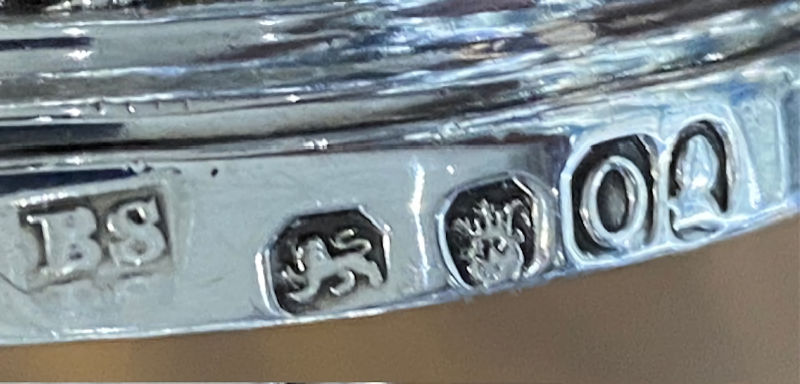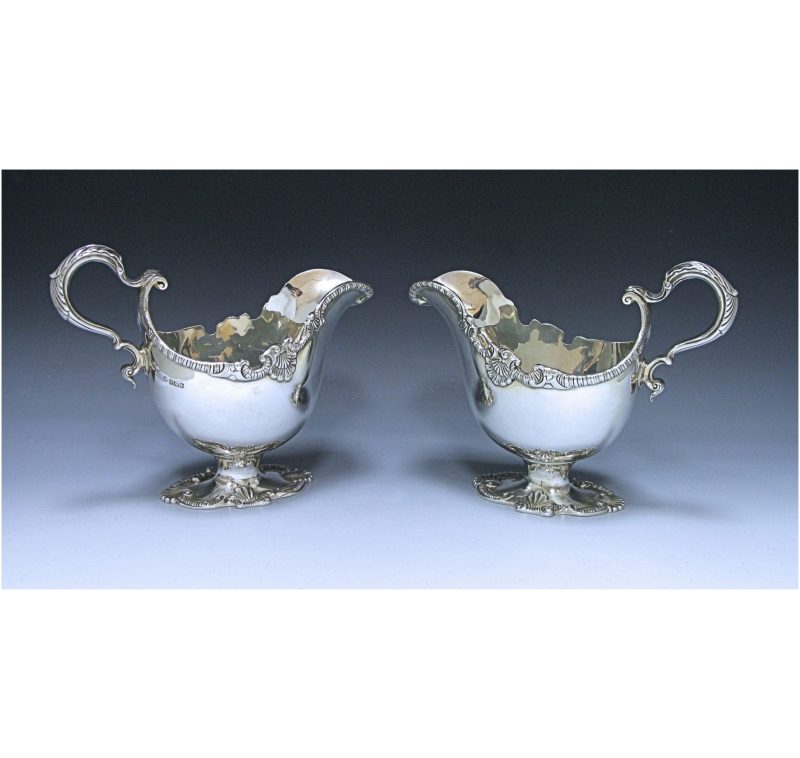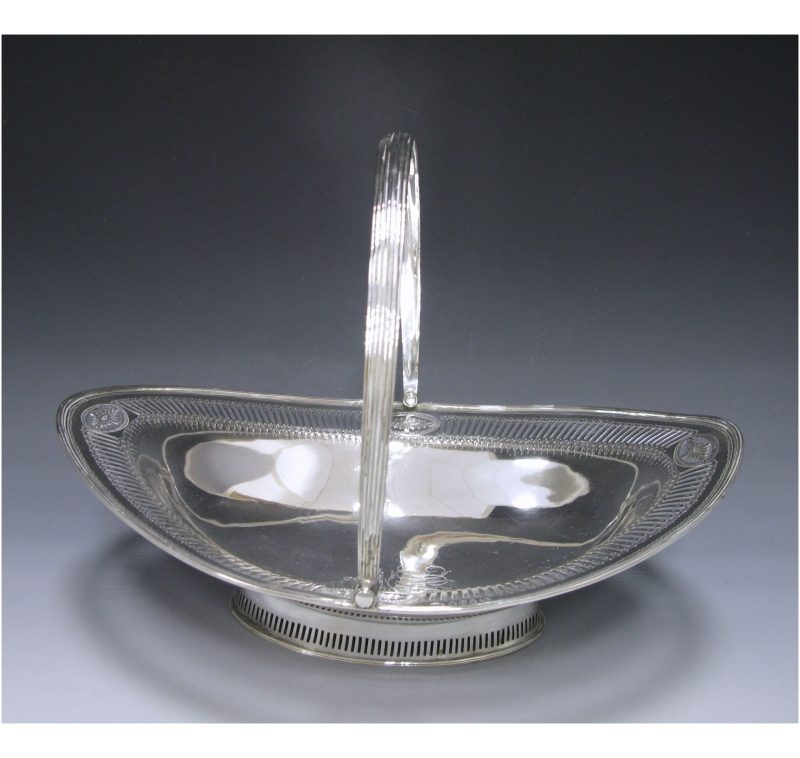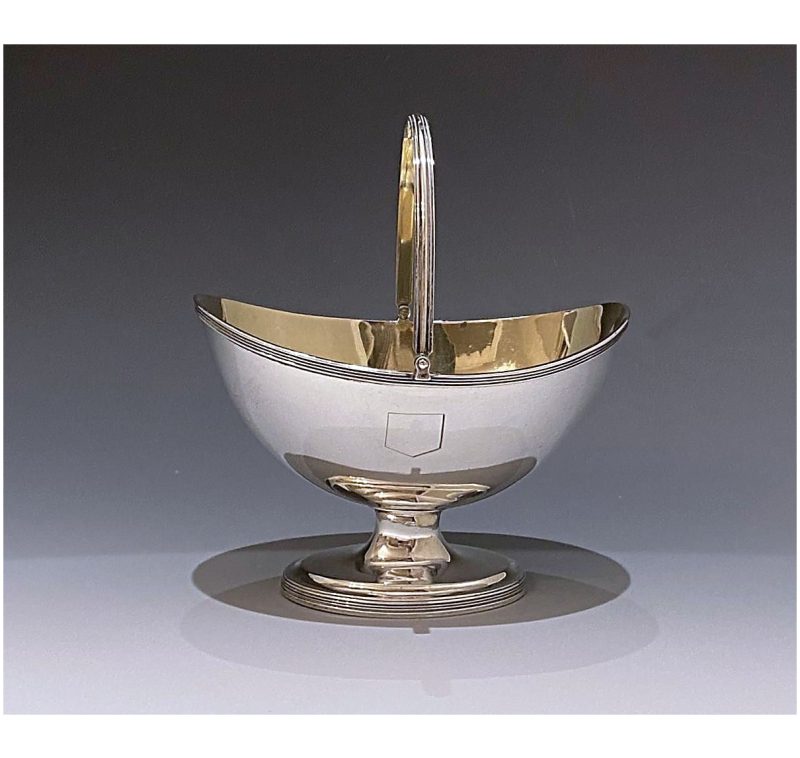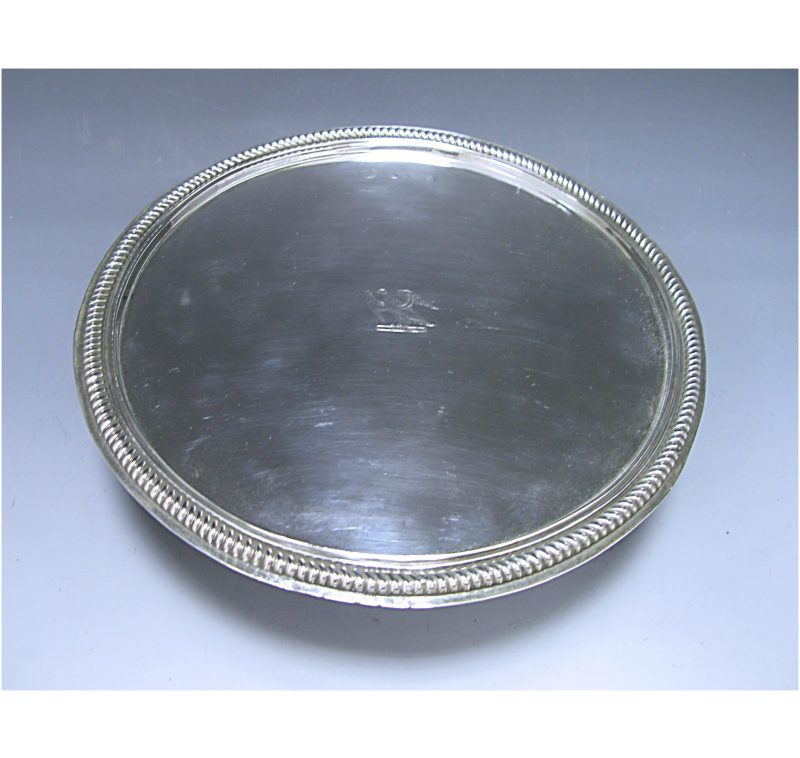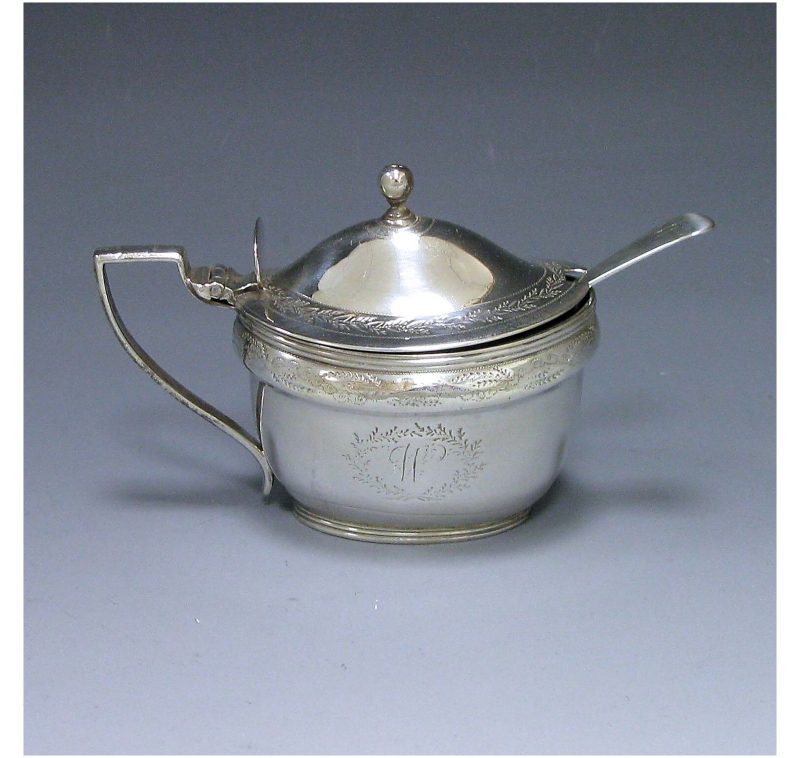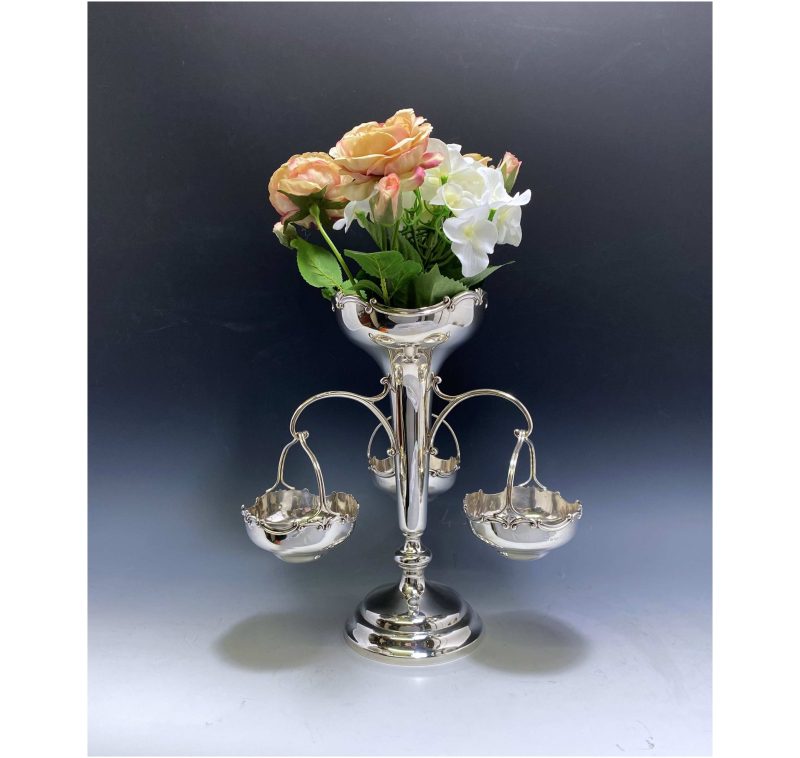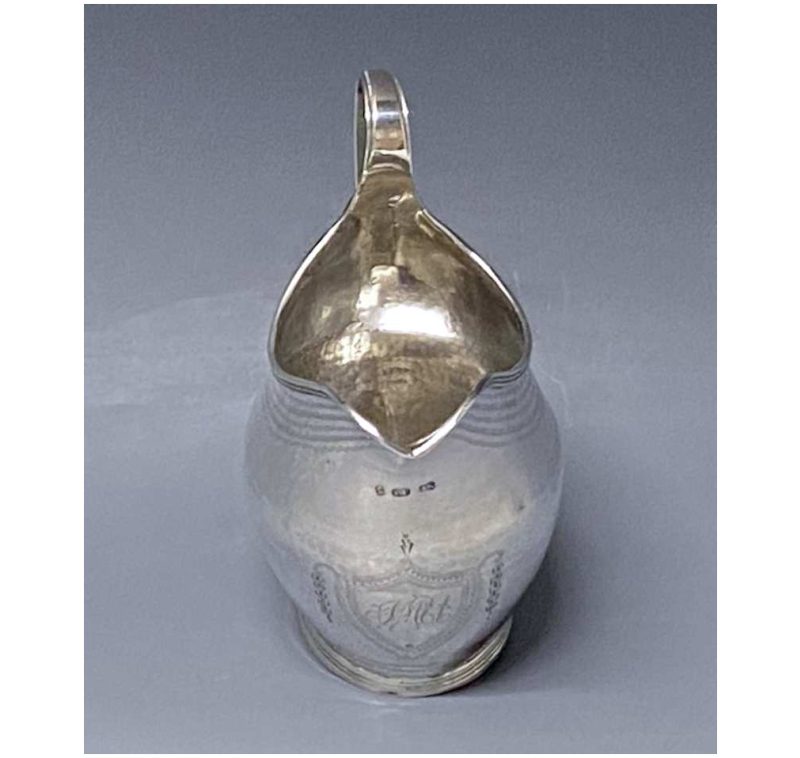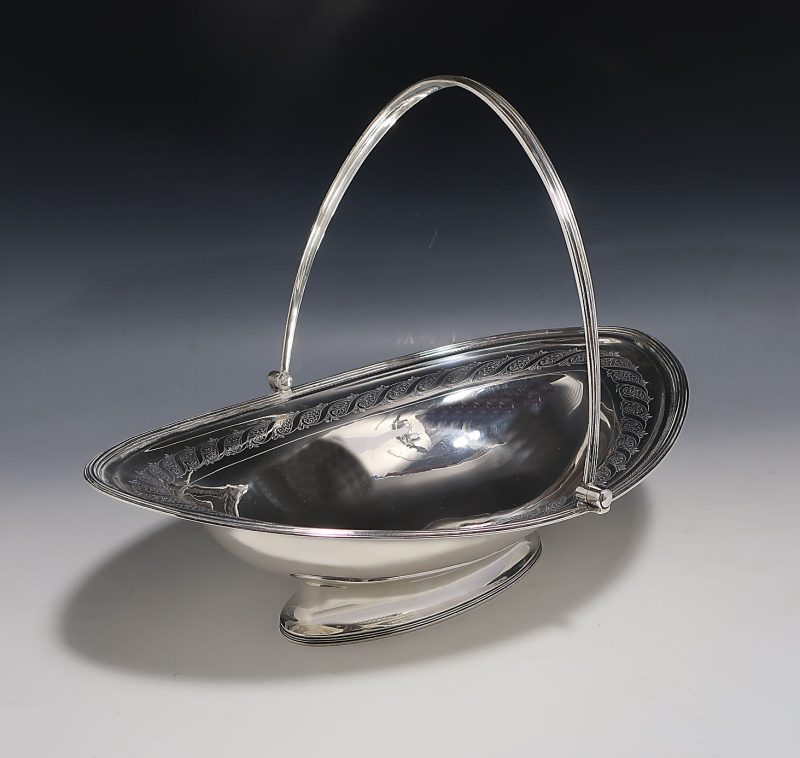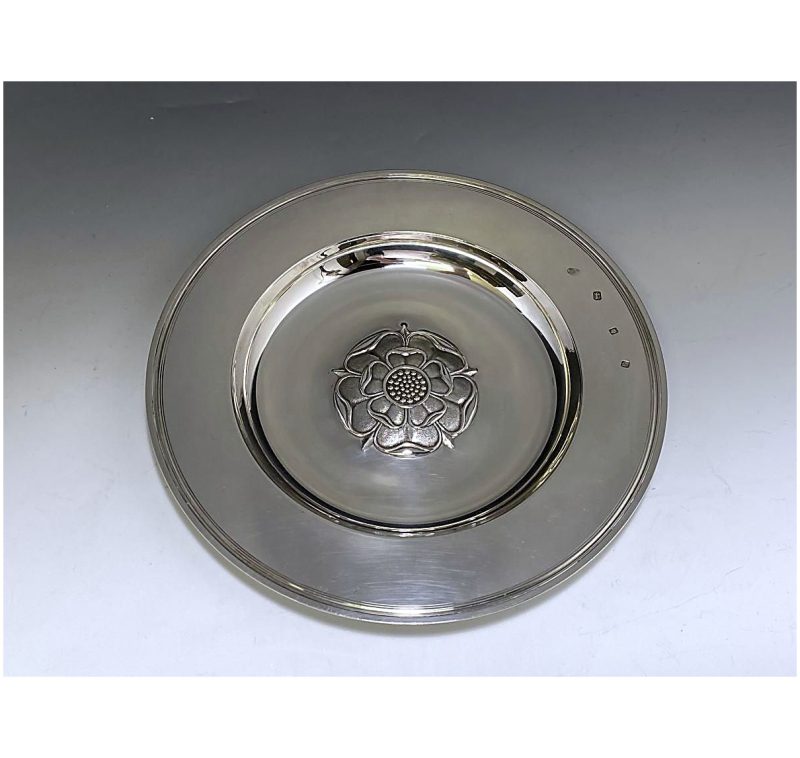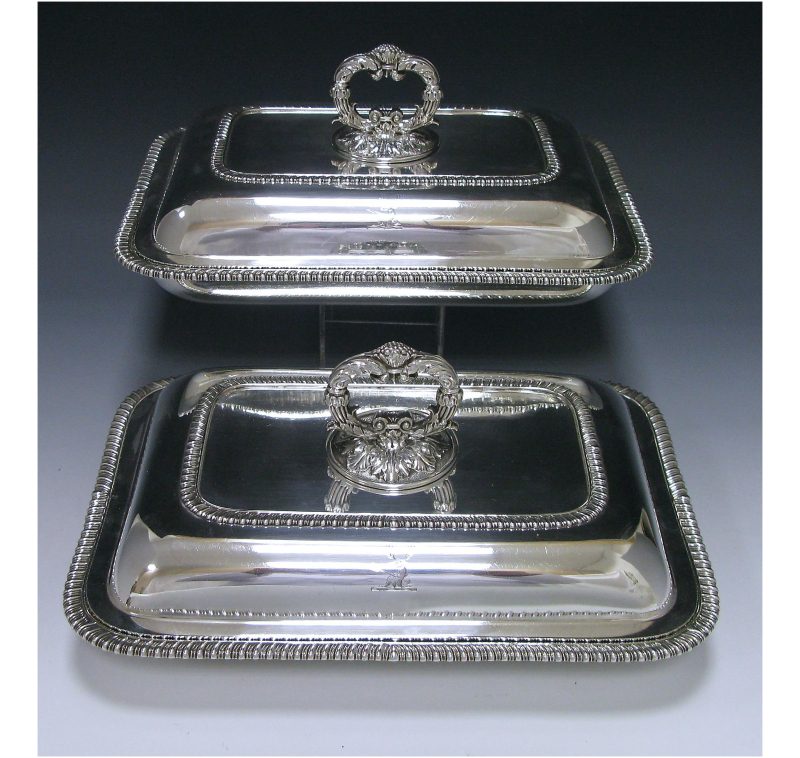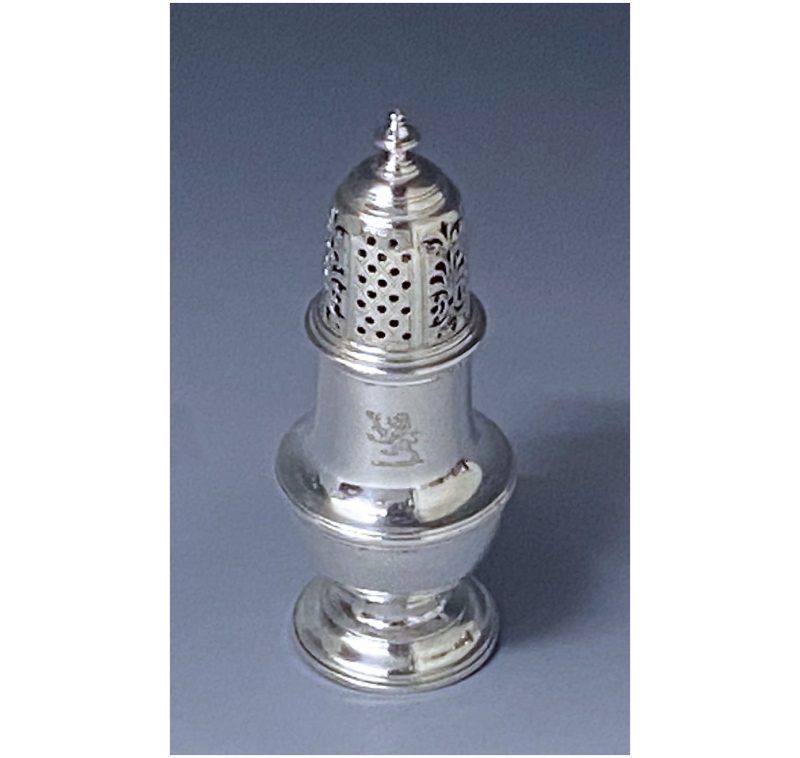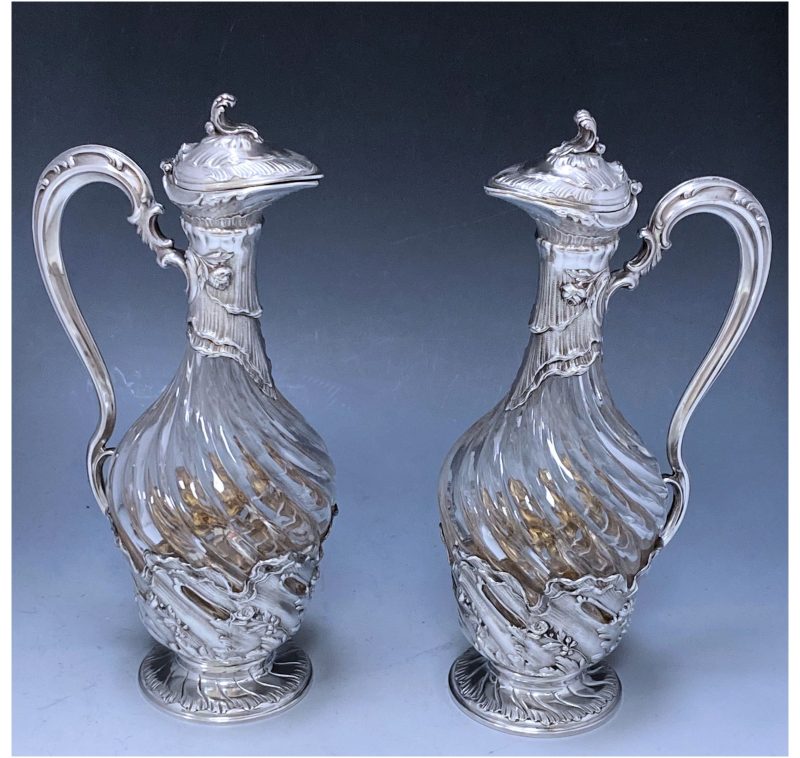Item Sold
Pair of George III Antique Silver Salt Cellars made in 1809
Sold
A pair of rare regency period large salt cellars with gadroon and shell borders made by the important makers, Benjamin & James Smith.
| Date | 1809 |
| Made By | Benjamin & James Smith |
| Location | London |
| Stock Number | W110x24 |

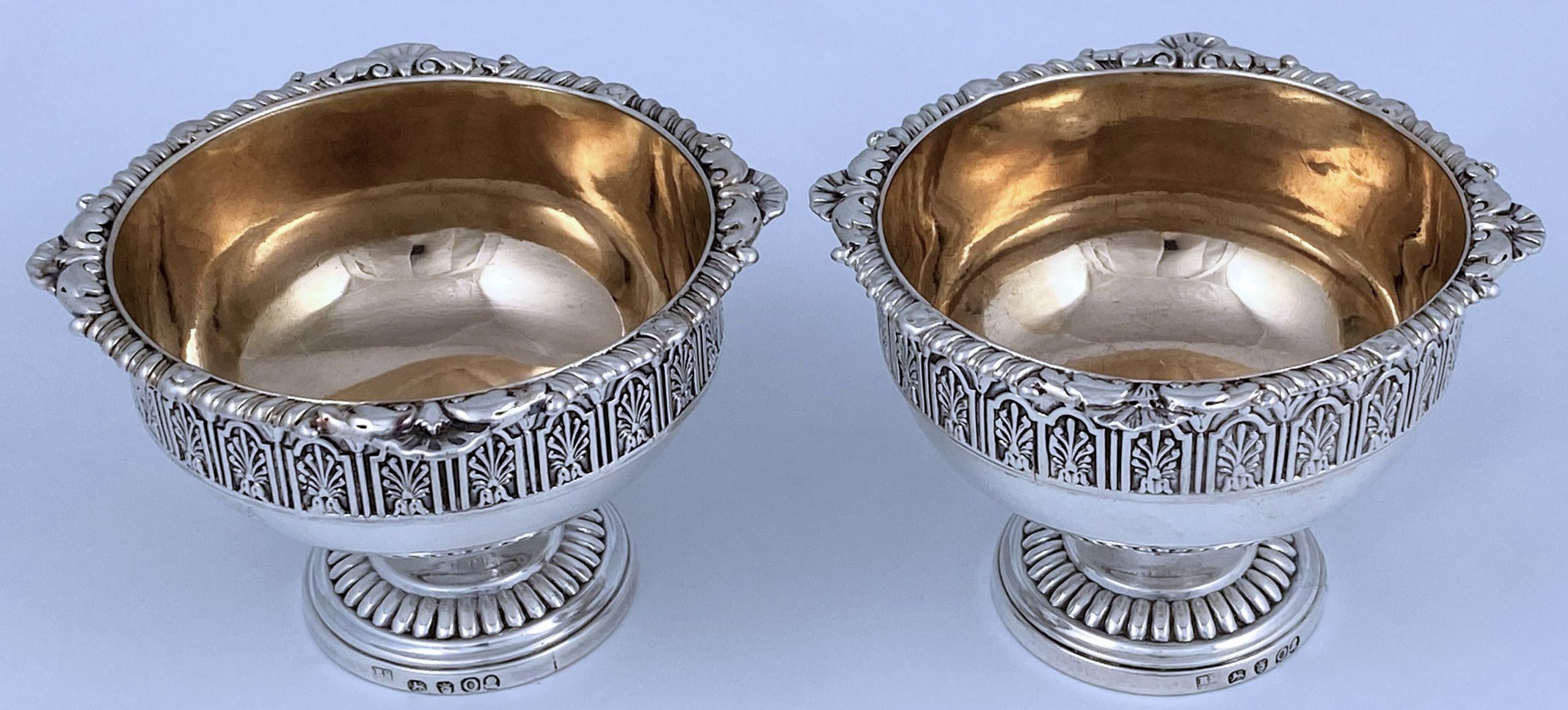
Added to basket
Pair of George III Antique Silver Salt Cellars made in 1809
Out of stock
A pair of rare regency period large salt cellars with gadroon and shell borders made by the important makers, Benjamin & James Smith.
These fine George III salt cellars are decorated in the fashionable Egyptian taste (which was normally only used by silversmiths who supplied the Royal family and the very upper echelons of British society at the time).
The Egyptian taste became fashionable due to military campaigns in Egypt; notably the Battle of the Nile in 1798 where Horatio Nelson led the British fleet to victory against the French.
The salts are richly gilded on the inside.
They are of extremely heavy weight and are in excellent condition.
Dimensions: height 7 cm, width 10 cm; weight 11.22 troy oz.
Benjamin Smith II & James Smith III.
Sons of Ralph Smith of Birmingham, born 15 December 1764. Married firstly, 8th October 1788, Mary Adams at Edgbaston parish church. Apparently to be identified with “Mr. Smith” introduced through James Alston, on recommendation of “Mr Nevill”, to Matthew Boulton at Birmingham (letter dated 18th May, 1790, Birmingham Assay Office), then described as “an Ingenuous Chaser.”
By September 1792, the firm of Boulton and Smith latchet manufacturers was in existence, from the evidence of a specification endorsed “Smith Buckle Invention” signed James Smith, from which it is clear that both Benjamin and James were with Boulton.
In March 1794, they were joined by John Lander, jeweller, who had invented an “Elastic Shoe Latchet”, when Benjamin and James are button makers.
Disagreement developed in 1801 when Benjamin threatened to withdraw and go to London and a new partnership was drawn up between Boulton and James in 1802.
On 1 February 1802, Benjamin married secondly Mary Shiers at Greenwich Church, by which time he was presumably setting up the workshop there.
First mark, in partnership with Digby Scott, 4th October 1802. Address: Limekiln Lane, Greenwich. Second mark together, 21st March 1803. The partnership apparently dissolved by 11th May 1807, when Smith entered a third separate mark. Fourth mark, 25th June 1807. Fifth mark in partnership with his brother James, 23rd February 1809. Address Limekiln Lane, Greenwich. Sixth separate mark, 14th October 1812. Seventh mark, 15th January 1814. Eighth mark in partnership with his son, Benjamin, 5th July 1816. Address: Camberwell. Ninth mark alone again, 25th June 1818.
By his first marriage Smith had four sons (of whom Benjamin was the eldest) and three daughters, and by Mary Shiers a fourth daughter in 1803 at Greenwich. His third son, Digby, born 2nd June 1797, may be assumed to be the godson of Digby Scott.
There seems little doubt from the accounts preserved in the Boulton papers at Birmingham, that Smith was of a difficult and probably irascible nature and this borne out with the variations in his entry of marks with and without partners.
His firm was, of course, together with Storr, manufacturing almost entirely for Rundell and Bridge, and it seems that the later may have supported Smith’s move to London.
The firm’s most important production is probably The Jamaica Service of 1803 in The Royal Collection. The silver gilt trays, baskets and wine coasters with open-work vine borders are among the most distinctive and accomplished achievements. The designs, so closely related to those of Storr, most almost certainly stemmed from central control by Rundell and Bridge.
We provide worldwide postage/shipping and everything is fully tracked and insured. Purchases will be sent via Royal Mail Special Delivery, FedEx, Parcel Force, A-Z couriers; other delivery providers may be used in extenuating circumstances. We deliver to the address provided at the time of purchase but not to PO addresses, as a signature is required upon delivery.
Some countries levy import duties and local taxes. Payment of these is the purchaser’s responsibility and beyond the control of William Walter Antiques Ltd. When the container has reached the destination country, a customs representative will contact you for payment prior to delivery.
Import restrictions are applicable to some destinations, especially the import of products containing materials such as ivory and tortoiseshell. We cannot accept orders requiring shipment to any countries which implement such controls.
All items are checked and photographed prior to packaging, and we aim to dispatch 1-3 days after receiving cleared payment.
Delivery Charges:
For the UK £15.00
For Europe £30.00
For the rest of World £50.00
The charges are subject to change
At the heart of William Walter Antiques is our dedication to providing our customers with beautiful silver of supreme quality, which celebrates all that is precious about sterling silver. Customer service also being paramount, our long-standing, devoted staff team go above and beyond the call of duty for all our clients. We believe it is this combination of passion and commitment that has kept our customers with us for many years.
We accept credit/debit cards or bank transfer. Please submit an enquiry below or contact us on:
Phone Number
+44 (0) 207 242 3248
Email
info@williamwalter.co.uk
Visit us at the London Silver Vaults
William Walter Antiques,
London Silver Vaults,
53-64 Chancery Lane,
London, WC2A 1QS
Opening Hours
Mon – Fri: 10:00 – 17:00
Sat: 09:00 – 12.30




